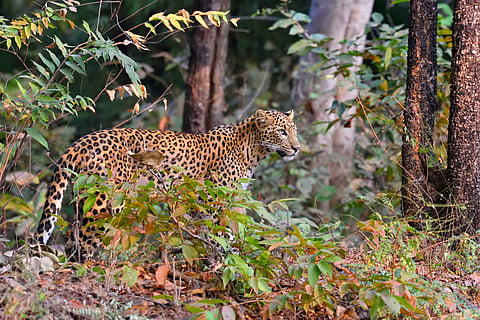
- Destinations
- Experiences
- Stay
- What's new
- Editor’s Picks
- Responsible Tourism
- CampaignsCampaigns
- Subscribe

Gurugram will soon have a "Leopard Park," which will help to reduce the number of big cats that wander into the city. The project calls for the preservation of a 15-kilometer section of the Aravalis from Bandhwari landfill to Damdama Lake in Gurgaon. The leopard park will be developed in Behrampur village.
The Process
The next step will be to select an organisation that will be tasked with carrying out a study of the Aravalis. The research project is expected to be completed by March of next year and handed to the Aravali Rejuvenation Board. Following this, an action plan will be developed.
According to sources, leopards are currently moving between the Aravalis in Gurugram and Faridabad, the Sariska Tiger Reserve in Rajasthan, and the Asola Bhatti Wildlife Sanctuary in Delhi.
The Inspiration
The idea was inspired by the Jhalana Leopard Safari Park in Jaipur. This will serve as a model for the building of the leopard park. Just 10 kilometres away from the heart of Jaipur, Jhalana is the city's best-kept secret that finds its way on the itineraries of only the most avid wildlife enthusiasts. With an area of 23 square kilometres, Jhalana is said to be the world's most densely populated leopard reserve, with almost 40 leopards calling the reserve their home. Read more about it here.
Considered far more elusive and fast amongst other big cats, leopards are not easy to capture on camera, let alone count. As wildlife conservation is beginning to gain momentum in India, the elusive leopard is ready to step out of the shadows as a species that requires focused conservation efforts.
